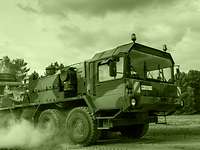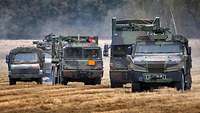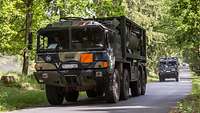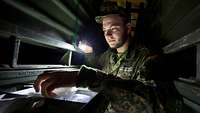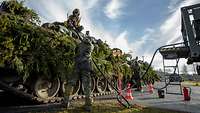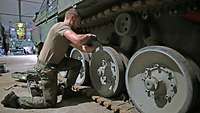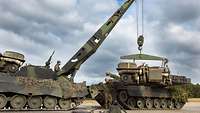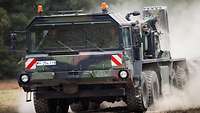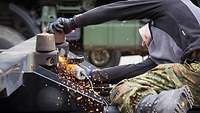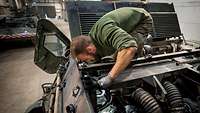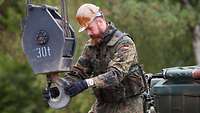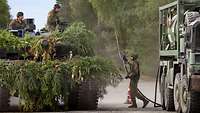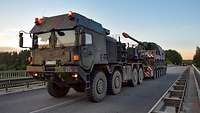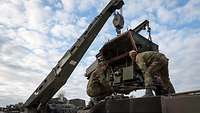The Army’s logistics forces use their assets and resources to ensure operational readiness, sustainability, mobility and accommodations for all branches of the Army. Army logistics focuses on providing all types of supplies, including fuel and ammunition, as well as on the maintenance of military equipment.
Supply and maintenance in the first 24 hours of a land operation and over the last 100 metres are especially challenging. That means that each individual service member must receive logistic support, even under every operation’s unique set of circumstances. Army logistics draws on a personnel pool of more than 15,000, accounting for about 15 percent of the Army’s overall strength. These figures illustrate how important logistics is to a successful conduct of operations.
The branch is headed by the Director of Army Logistics, who is also the Commandant of the Land Systems Technology Training Centre.
Supply and maintenance
In an operational environment, the Army’s vehicles and weapon systems consume thousands of litres of diesel fuel per day. Soldiers require hundreds of kilogrammes of food and thousands of litres of water. Tanks, trucks and other military equipment suffer damage or decrease in operational readiness due to wear and tear. The mission of Army logistics is to provide the force with the required supplies, and to evacuate and repair disabled equipment even in a high-threat environment.
By employing its personnel and equipment, Army logistics is able to ensure combat service support for other Army forces for limited periods of time. If required, support can also be provided to the personnel of the other major military organisational elements, such as the Air Force, Navy, Joint Support and Enabling Service, and Joint Medical Service.
Logistic services in the Bundeswehr are provided using a multi-tier system that is made up of various logistic echelons. Within the individual battalions, companies or batteries, this task is handled by the Logistic Services. At brigade level, organic combat service support battalions ensure the capabilities of supply, transportation and maintenance.
A wide variety of tasks
The following list highlights some of the many tasks carried out by Army logistics:
- Carrying out maintenance of tracked and wheeled vehicles
- Carrying out maintenance of small arms and complex weapon systems
- Carrying out maintenance of radar and communications systems
- Supplying fuel
- Supplying ammunition
- Supplying food, drinking water and items of personal demand
- Supplying clothing
- Supplying consumables and spare parts
- Transporting all types of supplies
- Recovering and evacuating tracked and wheeled vehicles
- Performing transshipment of air-delivered supplies
- Providing military postal services
Mountain pack animals
If the weather or terrain preclude the use of helicopters or all-terrain cargo vehicles, pack animals are often the only – and highly reliable – alternative, especially in difficult alpine terrain. The Bundeswehr has a unique asset in its mountain pack animals, another capability offered by Army logistics.
